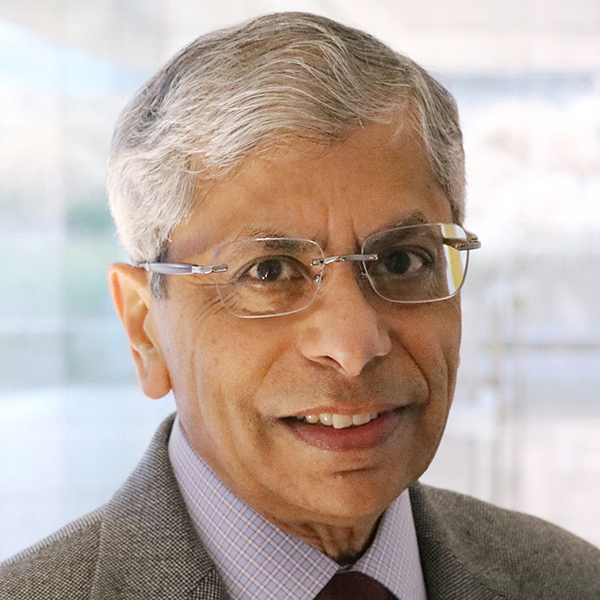Pallab Bhattacharya elected member of the National Academy of Engineering
Election to the National Academy is among the highest professional distinctions conferred on an engineer. Congratulations!

 Enlarge
Enlarge
Pallab Bhattacharya, Charles M. Vest Distinguished University Professor of Electrical Engineering and Computer Science and James R. Mellor Professor of Engineering, has been elected to the National Academy of Engineering (NAE) for his contributions to quantum-dot optoelectronic devices and integrated optoelectronics. Election to the National Academy of Engineering is among the highest professional distinctions conferred on an engineer.
Founded in 1964, the National Academy of Engineering (NAE) provides engineering leadership in service to the nation. The NAE operates under the same congressional act of incorporation that established the National Academy of Sciences, signed in 1863 by President Lincoln. Under this charter the NAE is directed “whenever called upon by any department or agency of the government, to investigate, examine, experiment, and report upon any subject of science or art.”
Since coming to the University of Michigan in 1984, Prof. Bhattacharya has pioneered technological advances in synthetically modulated semiconductor structures, nanophotonic devices, and other optoelectronic device and integrated circuit developments. One of his first important breakthroughs was discovery and subsequent elucidation of quantum dot formation, accomplished with his colleague Jasprit Singh. Later in 1996, with his graduate students and colleague Ted Norris, Bhattacharya demonstrated the first room temperature quantum dot laser. Quantum dot lasers outperform other semiconductor lasers, and are finding numerous applications in communications and other areas. Bhattacharya subsequently worked on quantum dot infrared photodetectors, capable of operating at high temperatures, with his graduate student (and now colleague) Jamie Phillips. These detectors are now being inserted into infrared cameras.
He is currently working on high-speed and high-power quantum dot lasers, quantum dot infrared photodetectors, photonic crystal quantum dot devices, and spin-based heterostructure devices. His group recently demonstrated the first semiconductor based spin valve, spin amplifier, and an electrically injected spin laser.
Reflecting on these years of discovery, Prof. Bhattacharya stated, “This has been an incredible journey. There were a lot of non-believers of the potential of these nanostructures and those who proclaimed that quantum dots would not amount to much. But through the complementary work of Norris, Singh, Rachel Goldman (Materials Science and Engineering) and Brad Orr (Physics), and of groups elsewhere, we laid a very strong foundation. The ensuing science and device physics and technology have been very exciting.”
Professor Bhattacharya is currently Editor-in-Chief of the Journal of Physics D. He has edited Properties of Lattice-Matched and Strained InGaAs (UK: INSPEC, 1993) and Properties of III-V Quantum Wells and Superlattices (UK: INSPEC, 1996). He authored the textbook Semiconductor Optoelectronic Devices (Prentice Hall, 2nd edition), which is still used worldwide.
Professor Bhattacharya has received many professional honors and awards, including the 2008 John Bardeen Award, the John Simon Guggenheim Fellowship, the IEEE (EDS) Paul Rappaport Award, the IEEE (LEOS) Engineering Achievement Award, the Optical Society of America (OSA) Nick Holonyak Award, the SPIE Technical Achievement Award, the Quantum Devices Award of the International Symposium on Compound Semiconductors, and the IEEE Nanotechnology Pioneer Award. At the University of Michigan, he was awarded the S. S. Attwood Award, the Ted Kennedy Family Team Excellence Award, and the Research Excellence Award from the College of Engineering, and the University of Michigan Distinguished Faculty Achievement Award. He is a Fellow of IEEE, the American Physical Society, the Institute of Physics (UK), and the Optical Society of America.
 MENU
MENU 
